Edit: this spiny/spiky weaver has been IDed as Hoplapoderus hystrix (Fabricius, 1801). Thanks to Andrei from The leaf-rolling weevils (Coleoptera: Rhynchitidae, Attelabidae) of the world fauna
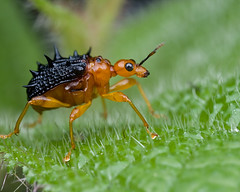
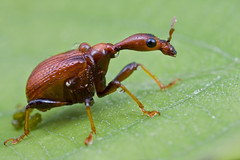
Hoplapoderus hystrix The more common type, Paracycnotrachelus sp
It is easy to see the resemblance. The only difference being the one on the left has spines / spikes on her elytra. Of course, I could not help thinking how dangerous it would be for a male spiny giraffe weevil / long necked beetle to mate with a female, with all the spines / spikes. Ouch :D
The similarity doesn't just end there. I was lucky to witness the whole process of how a female beetle roll up a leaf to lay egg in.
This is the host plant for this type of spiny giraffe weevil / long necked beetle. I don't have an ID for this plant yet but the closest match I found was Celtis sp.
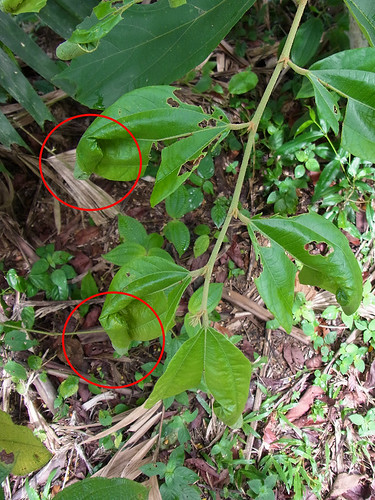
A closer look:
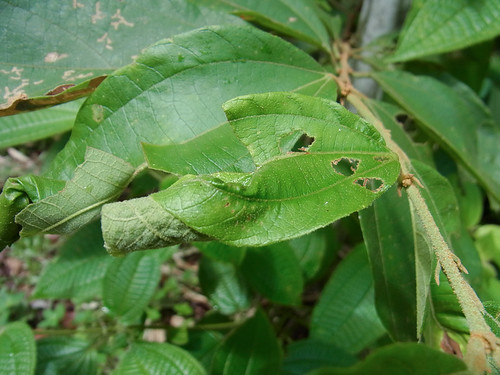
I did not capture the whole process but you can check out how the Cycnotrachelus roll up a leaf and lay egg in here. The process is similar. You can also find out what kind of host plant the Cycnotrachelus sp like here.
Now a couple more shots of this shy but lovely female spiny/spiky giraffe weevil/long necked beetle.
The hole was the work of this cute spiny giraffe weevil / long necked beetle. She feeds on this plant, and lay eggs on similar plant too.
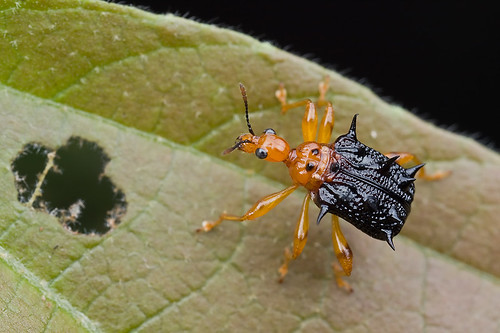
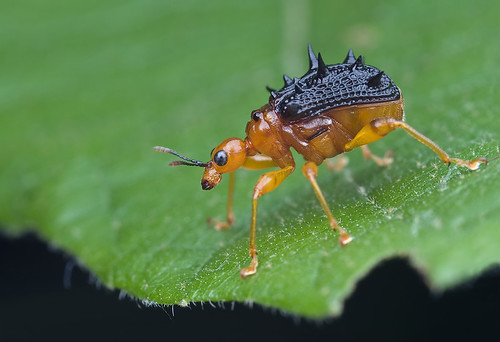
The next logical things to do, is, of course, to find a male specimen, and better still, a mating pair!
A mating pair like this Paracycnotrachelus sp....but the spiny/spiky version :D
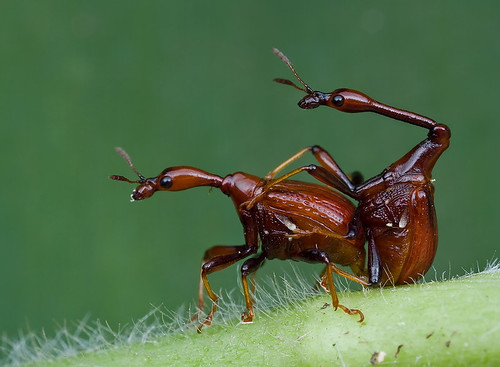
Great found Master Kurt! Spiny Geewee is exotic!!! and it's a beauty! the nature's avant garde! =) i can't wait to get my FF soon! xD
ReplyDeleteRegards,
JW
wow..awesome Sir Kurt...simply love it....
ReplyDeleteThanks JW, Zackri :)
ReplyDeleteKurt: I think the spiny one is 姬胡麻斑捲葉象鼻蟲(Paroplapoderus pardaloides - Not sure this is correct because another type 黑點捲葉象鼻蟲 also has the same name)
ReplyDeleteKJ..don't think so..looks different.
ReplyDeleteI found them in Indonesia...
ReplyDeletehttp://www.projectnoah.org/spottings/10518778